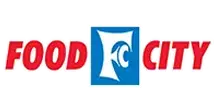University of Tennessee Athletics
Inside the T Mailbag - Neyland's Uniform
October 09, 2014 | General

By Brian Rice
UTSports.com
Welcome to this week's edition of the Inside the T Mailbag, where I answer your burning questions. Some are serious, some not so much. But this is your opportunity to interact with me to get a closer look at Tennessee Athletics. Usually, I'll answer your questions myself, sometimes I'll take them to an expert. But the more you ask, the more I answer. On to your questions!
Jessica, via email: Is General Neyland wearing a baseball uniform in his new picture on the back of the Jumbotron?
The short answer here is, probably.
While he is most known for the things he did on a football field, both as a coach and a player, Neyland was one of the most accomplished baseball pitchers in the history of the United States Military Academy.
From UT's 50 Facts on General Neyland:
Neyland was Army's first baseman in 1913 when the team's ace pitcher pulled a muscle that ended his career. Former Vols football captain Sammy Strang coached the Cadet nine and called a meeting to proclaim Neyland the team's new starting pitcher.
In his first outing, Neyland struck out 12 in beating NYU, 2-1. Later in front of a crowd of 15,000, Neyland was the pitching and hitting star in Army's 2-1 win over Navy. His outstanding performance excused Neyland from "hell-week" activities normally assigned to West Point plebes.
Neyland was 35-5 as a pitcher in his Army career, an .875 winning percentage, which still ranks among the Black Knights' all-time leaders. Included in that record was a streak of 20-consecutive wins and the first-ever no-hitter in Army history.
The New York Giants attempted to sign Neyland out of the Academy, offering him a $3,500 contract. Neyland passed to honor his commitment to the Army and headed for service in World War I.
Upon his arrival at Tennessee as a football assistant and ROTC instructor, Neyland undoubtedly assisted with the baseball program, although there is no formal record of him serving as a coach. It was common at the time for coaches to work with different sports. Neyland predecessors on the football sidelines including M.B. Banks, John Bender and Z.G. Clevenger all served as head baseball coach as well.
The end of the long story on Neyland and Tennessee baseball is that he was often known to wear a very baseball-like jersey to football practice. There are many photos in the archive that show him so attired, including the new shot on the back of the video board at the stadium that bears his name.
John, via. Twitter: Why are all of our football games at Noon?
This was a common question this week. The TV selection process is an interesting one in the SEC, with CBS getting the first selection for its 3:30 ET slot, then the rest are slotted by the league and ESPN for their family of networks.
Start times are the perfect example of not being able to please everyone. A balance of some at noon, some in the middle of the day, as Chattanooga will be this Saturday, and a few at night helps meet the needs of everyone. Too many early games can hurt with fans that travel 2-3 hours or more to see a game. Night games have the same effect.
With the launch of the SEC Network, the conference was able to answer the common complaint of everyone wanting afternoon games by adding a second afternoon slot in addition to the one on CBS.
As far as Noon specifically, SEC teams have drawn big TV ratings in that slot on ESPN, including the UT-South Carolina game last year and this year's UT-Georgia game, which ended up being the highest-rated ESPN game of the weekend.
A note for clarity's sake: UT does not set the game times. There are instances where a school can indicate a preference for a certain time, based on things going on in the area. Ultimately, the decision comes from he conference office in concert with the TV partners.
Chris, via email: What the (heck) is a Moc?
Our good friends at Chattanooga can answer this way better that I can, so here's the story from GoMocs.com
With the old nickname "Moccasins," a snake was used in the 1920s and an Indian was used until the year of major change in 1996. A moccasin shoe was even used in the 1980s.
In 1996, it was decided to adopt the State Bird of Tennessee, the Mockingbird, as the core of the new identity, while incorporating the strong regional imagery of Chattanooga's vast railroad history. The mascot "Scrappy" was born and a new emphasis was placed on the athletics department's role in the region.
The committee also recognized the need for the word "Chattanooga" to have a great emphasis in the logo. The nickname "Moccasins" was shortened to simply "Mocs." Thus established, Chattanooga could rebuild its athletics programs and initiatives around this new identity.
And rebuild it did. Quickly establishing the identity program in February 1997, combined with tremendous success in the NCAA Men's Basketball Tournament, UTC had positioned itself to reach for the next level.
From 1997 to 2007, the primary logo was the mascot, Scrappy, riding a train. The secondary logo features the front of a train with the word Mocs built into the logo. This logo is affectionately called the "Cowcatcher logo," referring to the front lower grill of the train that helped push objects from the train tracks.
In August 2007, officials at Chattanooga updated the school's marks. A new C logo, the "Power C" as it has become known to fans and alums, was created as the primary mark and is emblazoned on the side of the football team's helmets. The secondary marks were updated with a more modern look, and a new font, unique to the school, is now used on the text areas of the logos and marks.
In September 2008, Scrappy was re-branded to better match the image of a mockingbird and reflect the rich tradition of our state, our city and our University. New marks of the head as well as a full body were released. The program has also been taking special efforts to stay true to its color palette--which includes navy blue and old gold.
Phil, via email: I hear you're practically a spokesman for Diet Coke. On average, how many DC's do you consume on a weekly basis, and can you either confirm or deny that you are on their payroll.
They could not afford to endorse me. I expect to receive a Christmas card for their executives to thank me for helping put their kids through college.
All I can say is, I'm glad we are a Coke school and there is plenty of it in the fridges at events. My intake is excessive, but I won't apologize for it, just like I won't apologize for my excessive press box consumption of Mayfield Creamcicles.
Fun fact: I once received a Diet Coke mini fridge for tweeting the company a photo of an empty Diet Coke can castle that my friend and former UT colleague Cameron Harris and I built at my house. Still have it, just like Diet Coke is still delicious.
Derek, via email: Why have we struggled so much in the punt and kick return game this year?
Punt returns are a little more simple, so I'll get into that first. Opponents are doing a really good job of punting the ball high and not providing Cam Sutton with an opportunity to return. A fair catch is often the best play and, in many cases, the only play. Field position plays a part there, a return is less likely when a team is working with a short field and trying to pin UT deep.
On the kick return side, I don't think many people realize just how talented and consistent Devrin Young is as a kick returner.
Young is currently third on UT's all-time kick returns list with 1,543 yards. That leaves him 245 away from Leonard Scott (1,788) for second and just 311 yards from Willie Gault's all-time record of 1,854.
From a return average standpoint, Young's average return is 23.03 yards over 67 returns, which puts him within a half of a yard of Scott at 23.2 yards over 77 returns and Gault at 23.8 yards on 78 returns.
That's all for this week's edition of the Inside the T Mailbag! Thanks for the questions, you can tweet them to me anytime at @briancrice or send them in via email at UTSportsMailbag@gmail.com!












